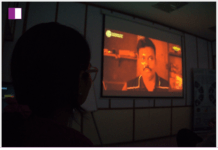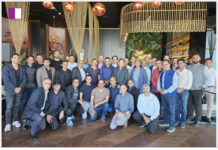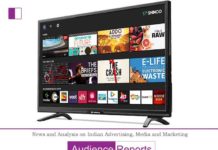Creative leaders and brand consultants emphasise that in the process of being on top of the social media ‘always on’ marketing strategy, one must never compromise on authenticity and being relevant
We find ourselves inundated with a deluge of branded messaging, spanning from advertisements to content marketing and everything in between about brand. This flood has become nearly insurmountable to navigate.
Why has this happened?
It’s because many businesses have embraced an ‘always-on’ communication strategy in an effort to distinguish themselves in a crowded marketplace. The prevailing notion is that the more frequently you can put your message in front of your target audience, the better your chances of success.
He said, “Even the best of the best lovers want space. Then why would consumers want to be engaged with the brands all the time? We are in the business of human-to-human relationships. While QR codes, 3D, and voice commands are trendy, they’re not something consumers engage with all the time. We’ll go back to the times of big ideas that connect brands in a more humane manner than resorting to short-lived social media tactics and tech-driven gimmicks.”
Pawar and Bhatt also think that the always-on approach in marketing also impacts creative quality and develops creative fatigue. Bhat added, “There’s a difference in creating 10 reels in a month versus creating a well-researched brand film.”
Having a different school of thought, Mathias pointed out that good brands do understand balancing between the big idea and being ‘always on’. He commented, “Brands don’t necessarily sacrifice quality at the altar of quantity. For example, Fevicol has long created communication around the strong bond’. At times, it comes up with impactful TVCs or creates quirky social media content around the same big idea of a strong bond. The same goes for Amul. I can name quite a few more brands that do it thoughtfully without compromising creative quality.”
“The danger is when brands just jump onto a bandwagon. For example, if Virat Kohli completes a century in a match, out of FOMO, brands unnecessarily find it important to post something around it on social media. That’s when it falls flat. Only participate in moments when you have something authentic to say. No point just jumping on the bandwagon,” he added.
It’s imperative for brands to transition away from the ‘always-on,’ and push-oriented messaging style to an ‘always-there’ approach—an approach that involves crafting content that is relevant for the audience to organically discover on their own terms.
Having said that, Anchan believes that a brand can be equally engaging by creating content for 10 days in a month, which needs to be connected to the larger angle of relevancy and impactful storytelling.
He further said, “It’s important to speak to the audience in the language they want to be spoken in. While big ideas and big campaign thinking are important, winning with social media is equally important. If a brand gets its always-on campaigns right, its bigger campaigns will also stick,” he said.
In the end, as per Shoor of The Womb, all that a brand needs is to be mentally available to consumers when they decide, when they buy, or when they talk about them.
He commented, “There are enough wise and smart marketing people who know that high impact and adequate presence are equally important for consumers to decide in their favour.”
Things to keep in mind while deploying an ‘always on’ strategy
Listing down four points to keep in mind while treading this path, Srinivasan shared:
Always on strategy relevant to brands that consumers can easily buy
One, this ‘always on’ strategy would be purposeful for brands people can buy into, consume, or indulge in easily and more often. So, B2B brands are generally out. Higher-priced products, too, are out. There’s a reason why Zomato is the king of this space in India.
Mathias seconded, “Brands like Zomato and Swiggy fall under the impulse category. Therefore, the more a brand in the impulse category cues its usage with interesting things, the more likely it is to be remembered by consumers.”
Have clarity on what the brand wants to achieve by always being always on
Two, the brands need to understand what they would like to achieve from this ‘always on’ strategy. Consider Zomato. In most of their daily ‘content’, they hardly sell Zomato’s service. Instead, they simply sell the idea of food in general. The broad idea is, ‘Whenever you think of food, think of Zomato’.
Brand-agency trust is of utmost importance
Three, this kind of incessant communication is not easy and cannot be done via the conventional agency-brand relationship. Or, it needs to be done the Amul way, where the client completely trusts the agency to do the right thing on their own.
This is a long-term strategy
If the brand has just two ad campaigns every calendar year, they would need to optimise them to make both successes, given the money and effort involved. But with ‘always on’ communication, they would need to understand that not every piece of content would hit the mark, and that is okay.





































